On the Road
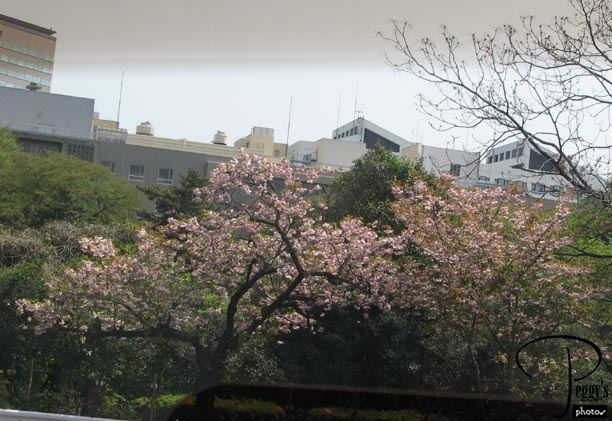
Cherry blossom season in Japan was just about over––we missed the full bloom by several weeks, but here and there, there were still some cherry blossoms in bloom.

On the Road
View from Our Terrace
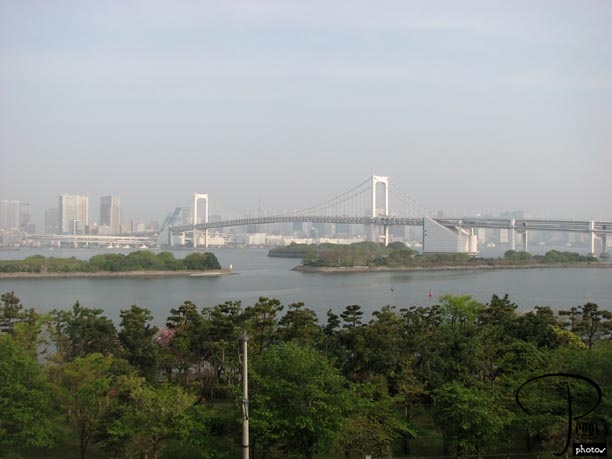
It is already light at 5:30 a.m. in Tokyo. The sun was shining. This is a view from our hotel room terrace of the Rainbow Bridge and Tokyo across Tokyo Bay. A very pretty sight to wake up to.

View from Our Terrace
View from the Restaurant Window
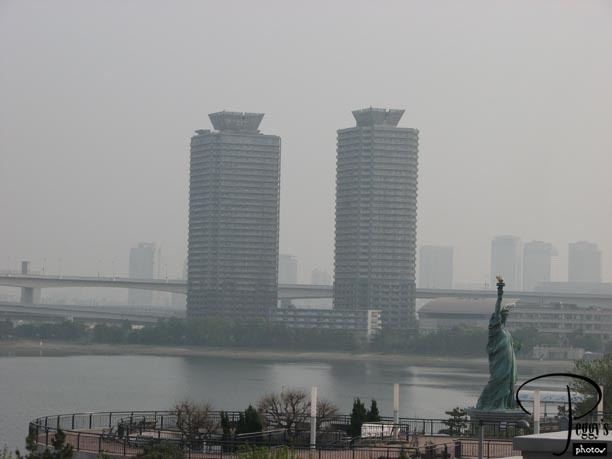
A view from the restaurant window where I had breakfast. There appeared to be only one restaurant open at our hotel for breakfast––its buffet was about 3270 yen, so I tried to save some money and ordered a combinatin plate of a fried egg, hash browns, breakfast breads, orange juice, and coffee. With tax, it came to 3403 yen ($34.03). Too much for my food budget, so I henceforth shopped at a convenience store for orange juice, donuts, and coffee. For one cup of coffee in our hotel room, there was a charge of 450 yen. I was able to buy two drip coffee cups for 170 yen. I don’t know if other hotels were charging for coffee in their rooms, but it would be wise to bring your own coffee, etc.

View from the Restaurant Window
Odaiba
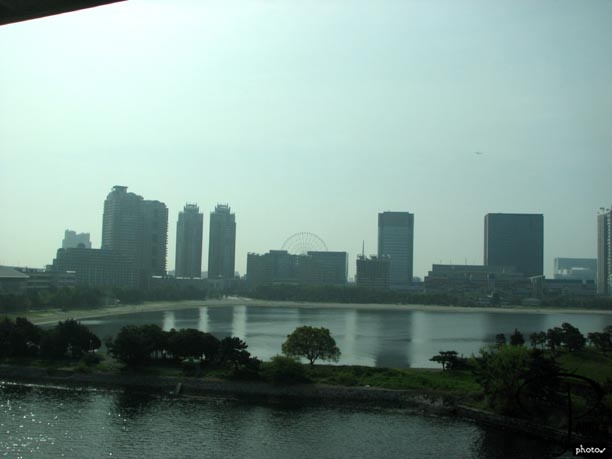
Today I would be on my own, as I would also be for the next four days. Before leaving for Tokyo, I booked five days of escorted tours given by Sunrise Tours. Today’s tour was the “Tokyo Morning Tour”––we would visit the Meiji Jingu Shinto Shrine, the Imperial Palace East Garden, and the Senso–ji Buddist Temple, with a drop–off at Ginza. A bus picked me up at 8:15 a.m. at the hotel to take me to the Hamamatsucho Bus Station, where we would get on a different bus for our tour. Photo: View of the island of Odaiba taken from the bus on our way across Tokyo Bay. You should be able to see the sand beach of the island.

Odaiba
View of Tokyo
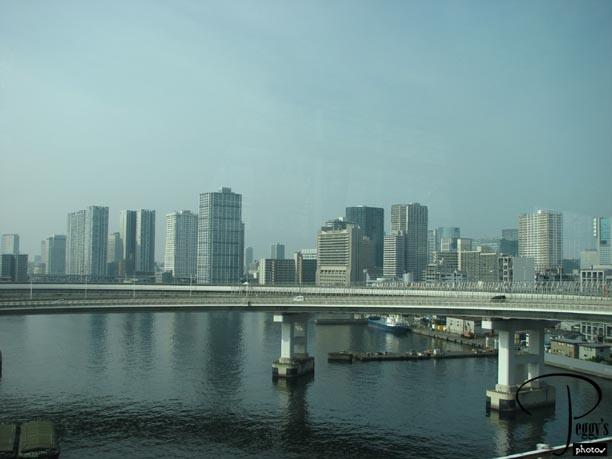
View of Tokyo taken from the bus on our way to the bus station.

View of Tokyo
Tokyo
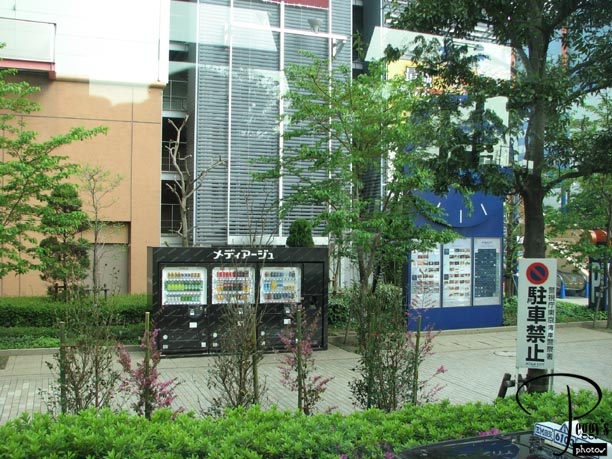
We passed these drink vending machines. You see these machines all over Tokyo. Tokyo is a very clean city but what you don’t see are trash cans. It is a mystery as to how Tokyo stays so clean.

Tokyo
Tokyo Apartment House
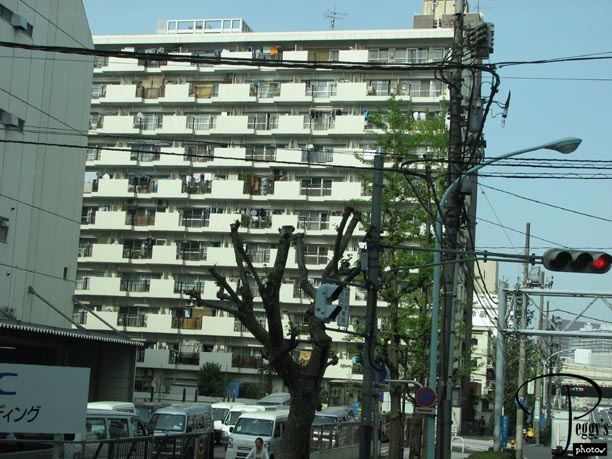
A Tokyo apartment house.

Tokyo Apartment House
Tokyo Apartment House
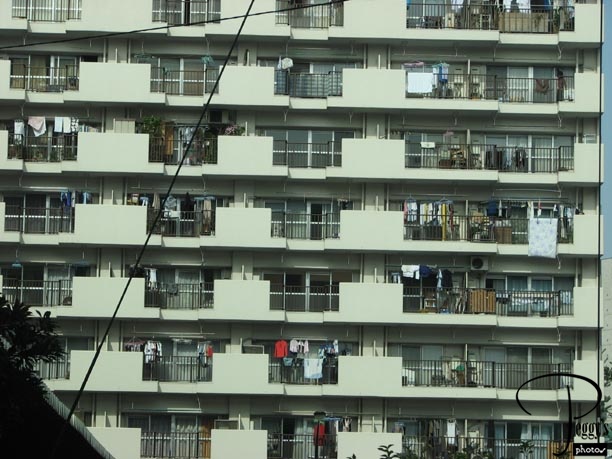
Close–up of the apartment house showing laundry hung on the balconies. This scene surprised me. However, I was told that the Japanese prefer to dry their laundry in the sun rather than in machines.

Tokyo Apartment House
Tokyo
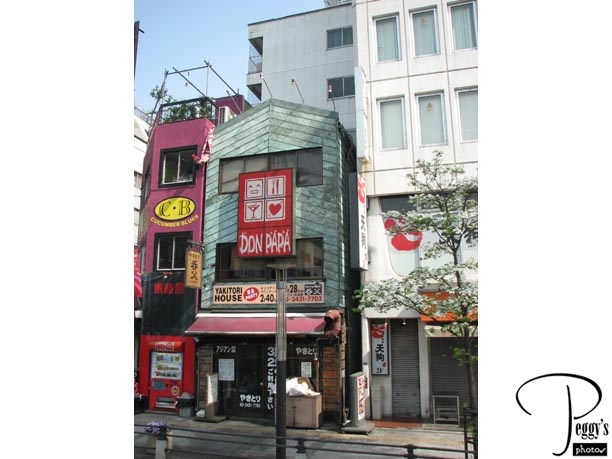
Some small colorful buildings among the numerous skyscrapers.

Tokyo
At the Bus Station
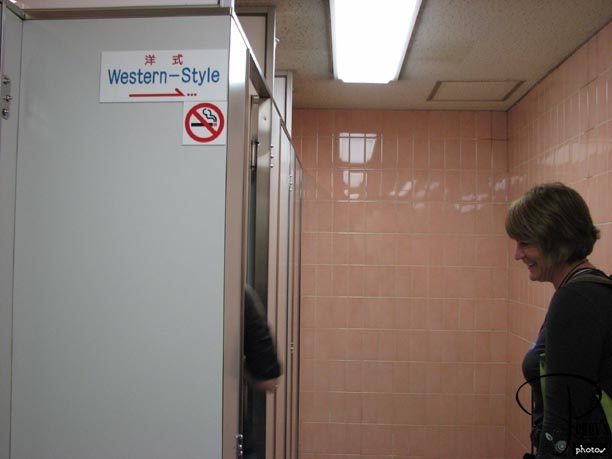
This sign at the Hamamatsucho bus station also surprised me. For females at least, there are both Japanese–style toilets and Western–style toilets.

At the Bus Station
At the Bus Station
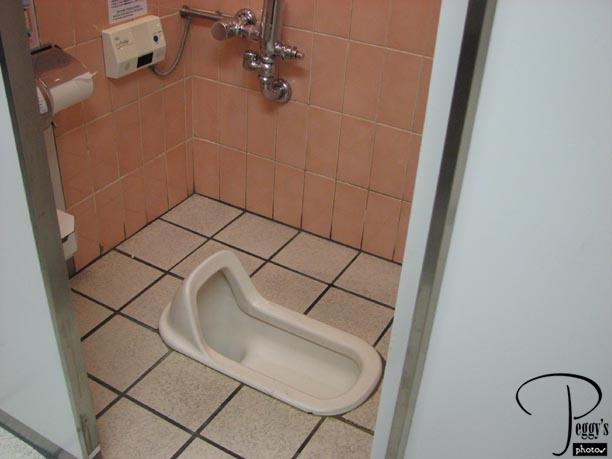
A Japanese–style toilet.

At the Bus Station
Instructions
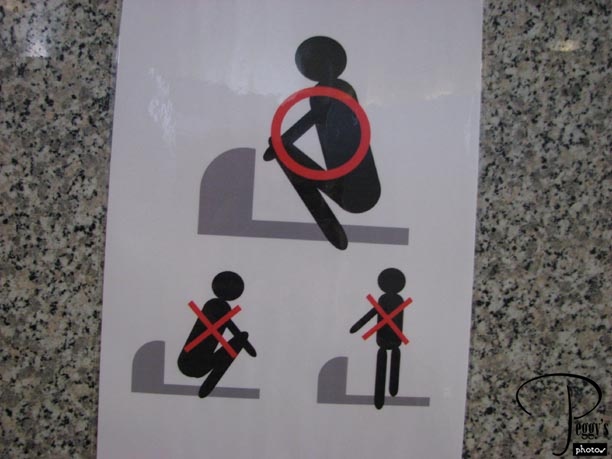
This sign and the next sign were not here at this bus station but, rather, at the Mt. Fuji Visitors Center, but these instructions could be important––first, proper way to use a Japanese–style toilet.

Instructions
Instructions
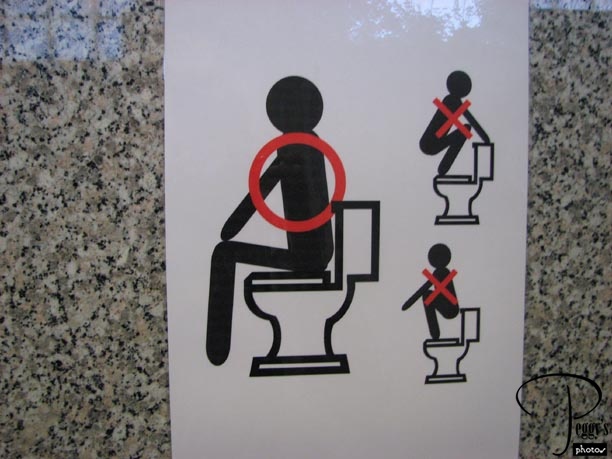
Instructions for using a Western–style toilet. The Western–style came with a running water accompaniment and also a heated toilet seat. Additionally, you seldom see any towels or even a hand–dryer in public bathroom––you use the air–dry method in Japan.

Instructions
Tokyo Tower
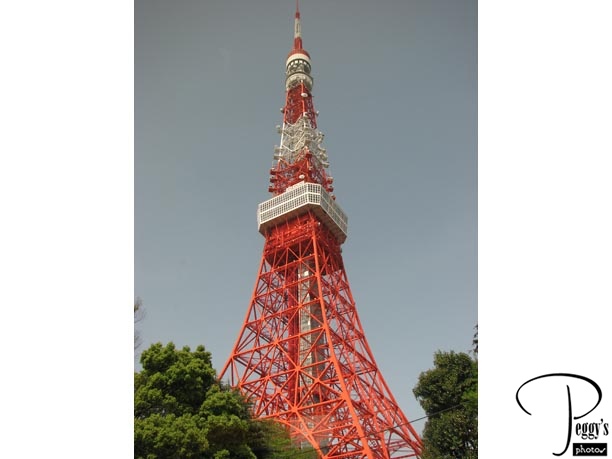
Now on my tour bus. My seatmate was a very nice woman from Manila. We passed by Tokyo Tower. It was completed in 1958 to serve as a transmission tower. It no longer is used as such. It is 333 meters tall (1,093 feet) and is taller than the Eiffel Tower on which it is based––the Eiffel Tower is only 324 meters tall. I went up the Tokyo Tower two days later.

Tokyo Tower
Tokyo Tower vs. Eiffel Tower
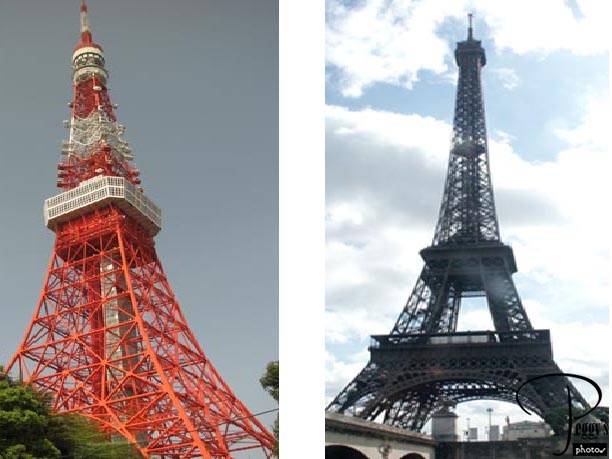
In these side–by–side photos, the Eiffel Tower looks much taller, but the photos were taken at different angles and distances.

Tokyo Tower vs. Eiffel Tower
Driving
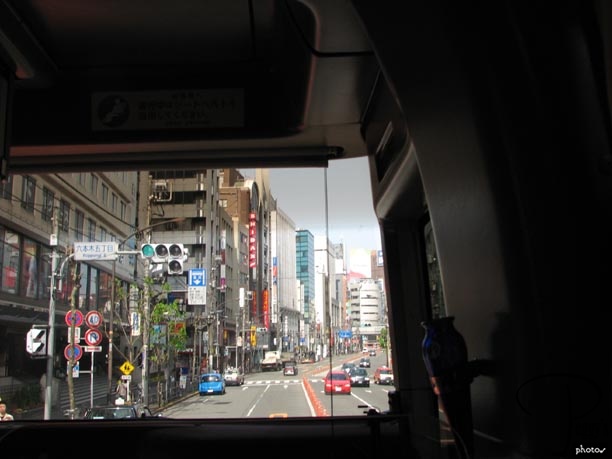
The Japanese drive on the left–side of the road, as do the English. I was told that the reason for this is that the first car brought into Japan was an English car with the wheel on the right side of the car. And as in England, the Japanese walk up and down stairs on the left, they walk on streets and in subway stations on the left, etc. It takes some getting used to and I never quite mastered it while I was here.

Driving
Roppongi
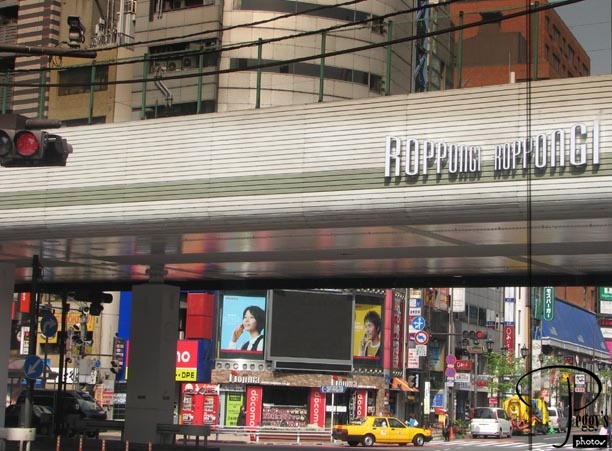
This section of Tokyo hops at night. Here are the clubs, karaoke bars, etc. I didn’t visit it at night. In the daytime, this section is rather dull.

Roppongi
Learning to Count in Japanese
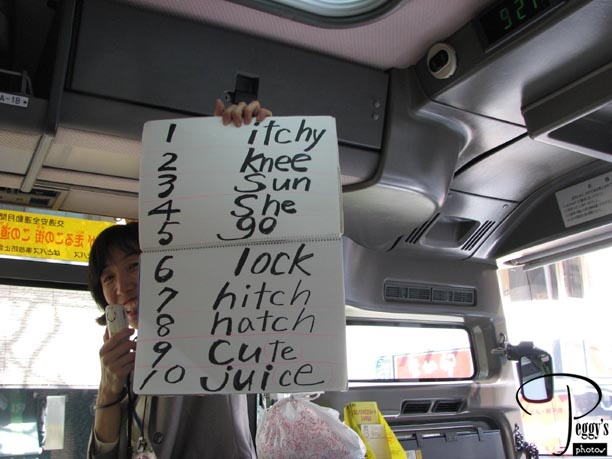
Our tour guide, Naomi, is giving us a Japanese counting lesson. All of the Sunrise Tour guides that I had carried along photos, pictures, etc., that would increase our understanding of Japan and the particular places we would visit. Naomi also told us that many Japanese can understand English, but to speak to them in English slowly.

Learning to Count in Japanese
Tokyo
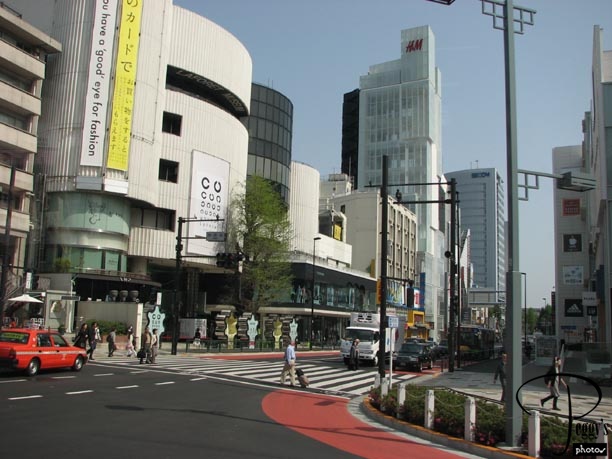
Driving along.

Tokyo
Meiji Jingu Shinto Shrine
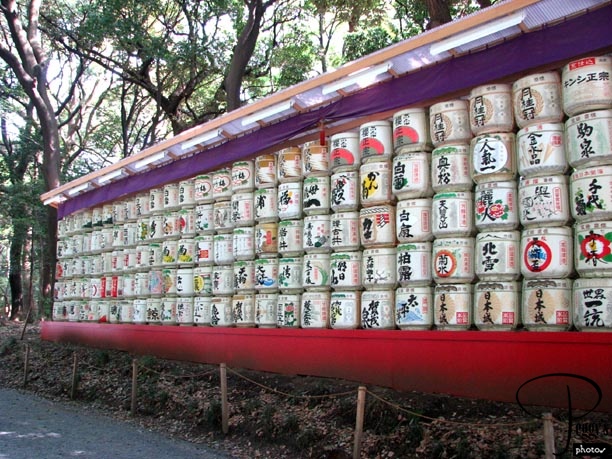
We have arrived at the Meiji Jingu Shinto Shrine, the most important Shinto shrine in Tokyo. There are two main religions in Japan––Shintoism and Buddism. However, the Japanese do not describe themselves as being religious or of being of one religion. They combine both Shintoism and Buddism in their lives and sometimes even add in Christian elements such as giving presents for Christmas. One of my tour guides said it this way: Shinto for weddings and Buddism for funerals, though some Japanese opt for a tux and Western wedding gowns for weddings. The Shinto religion is native to Japan and has it roots in prehistoric times. It center is that of kami, which is a spirit or a god. Almost any natural object can be sacred, so there are thousands of Shinto gods. Photo: These are barrels containing saki, which is used in purification rites at the Shinto shrines. These barrels were at the entrance to the shrine.

Meiji Jingu Shinto Shrine
Meiji Jingu Shinto Shrine
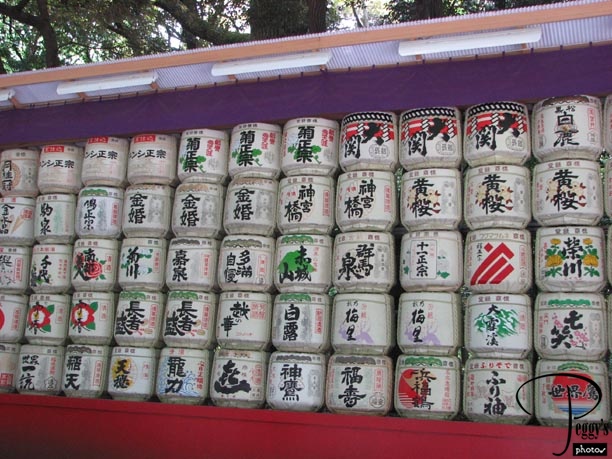
A closer–up view.

Meiji Jingu Shinto Shrine
Meiji Jingu Shinto Shrine

Even closer–up.

Meiji Jingu Shinto Shrine
Meiji Jingu Shinto Shrine
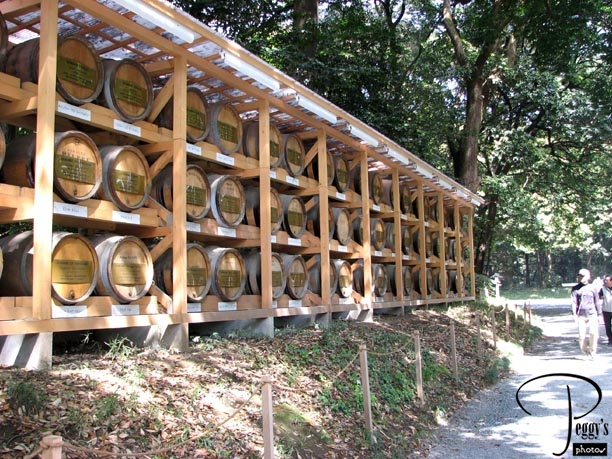
The Meiji Jingu Shinto Shrine is dedicated to Emperor Meiji (1852–1912). He led the way for the blending of the East and the West. He enjoyed Western food and having wine with it. These barrels of wine are from the Bourgogne region of France and have been consecrated. I think I was told that the wine is used in some of the Shinto ceremonies.

Meiji Jingu Shinto Shrine
Meiji Jingu Shinto Shrine
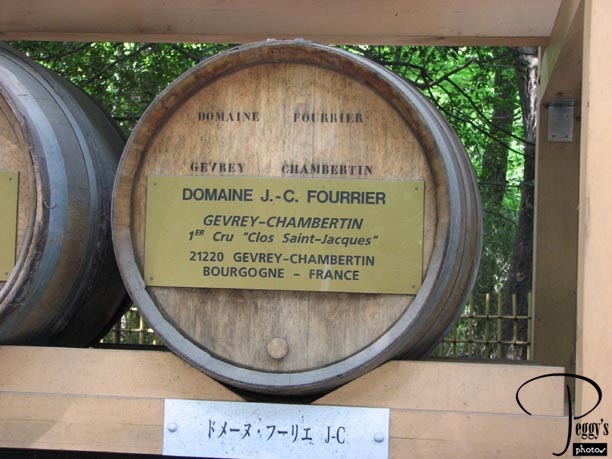
Close–up of one of the wine barrels.

Meiji Jingu Shinto Shrine
Meiji Jingu Shinto Shrine
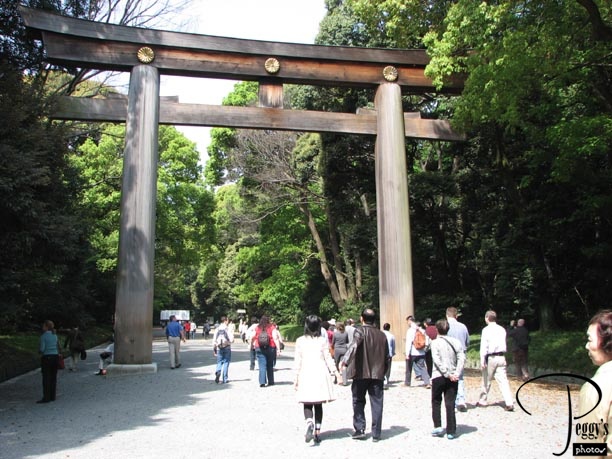
The Meiji Jingu Shinto Shrine dates back to 1920, but was destroyed by Allied bombing and then rebuilt in 1958. Photo: You can recognize a Shinto shrine by this gate, called a “torii.” Often, they are painted red. Here, we are entering the main part of the shrine.

Meiji Jingu Shinto Shrine
Meiji Jingu Shinto Shrine
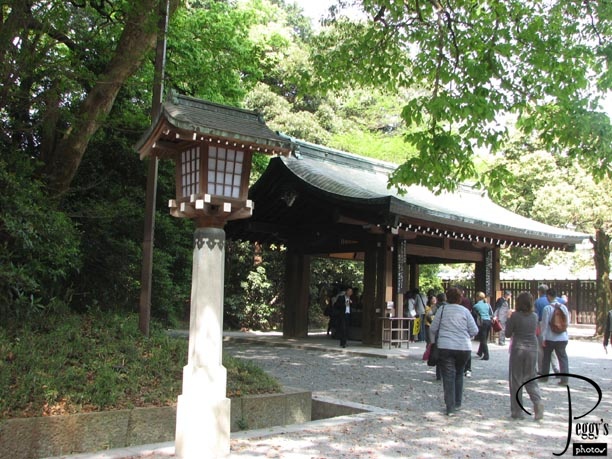
The structure to the right is called the “temiuya.” See next photo.

Meiji Jingu Shinto Shrine
Meiji Jingu Shinto Shrine
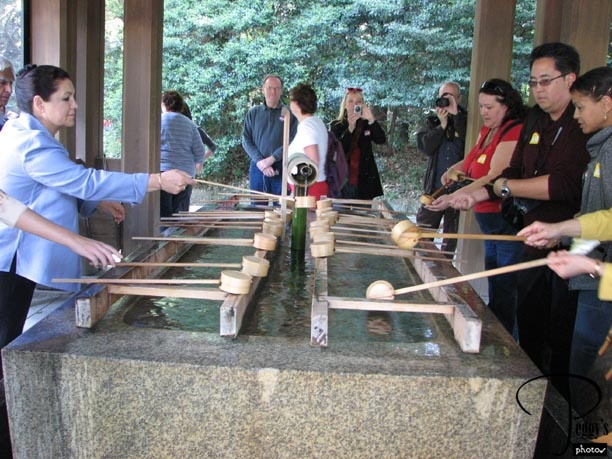
Inside the temiuya is a source of water and cups at the end of long handles. The water is used for purification before entering the shrine. First, you fill a cup with the water and pour it over your hands. Then, refill the cup and place some of the water in your palm. Now you drink the water.

Meiji Jingu Shinto Shrine
Meiji Jingu Shinto Shrine
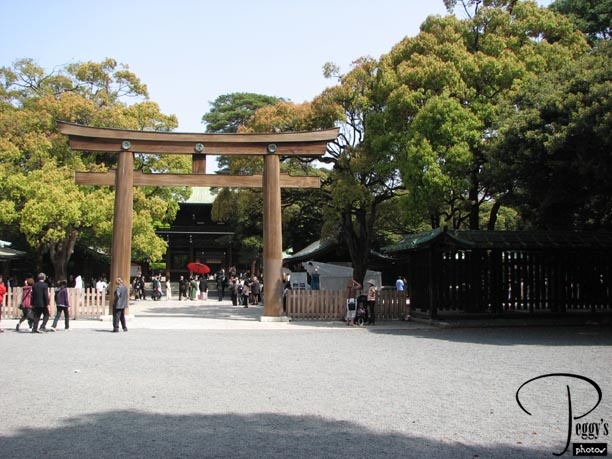
Another torii to walk through.

Meiji Jingu Shinto Shrine
Meiji Jingu Shinto Shrine
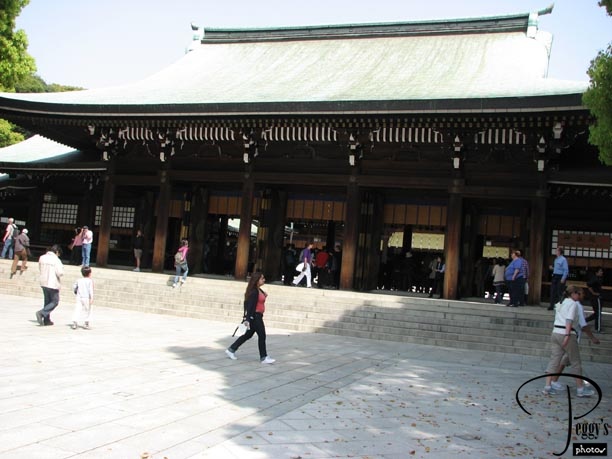
The outer shrine.

Meiji Jingu Shinto Shrine
Meiji Jingu Shinto Shrine
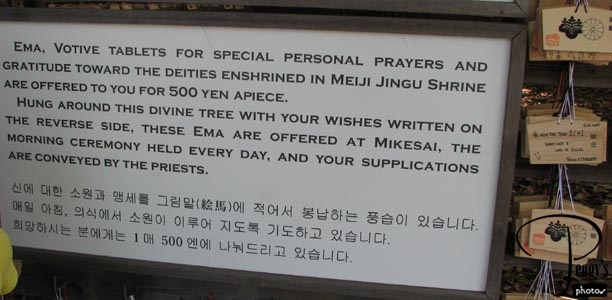
You can buy votive tablets for 500 yen apiece.

Meiji Jingu Shinto Shrine
Meiji Jingu Shinto Shrine
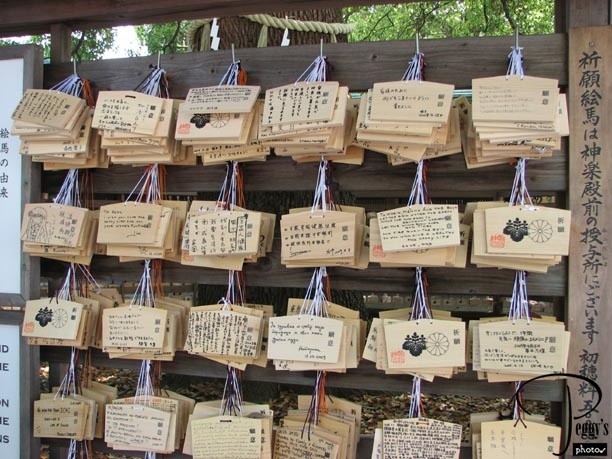
After purchase, you hang your tablet on this board.

Meiji Jingu Shinto Shrine
Meiji Jingu Shinto Shrine
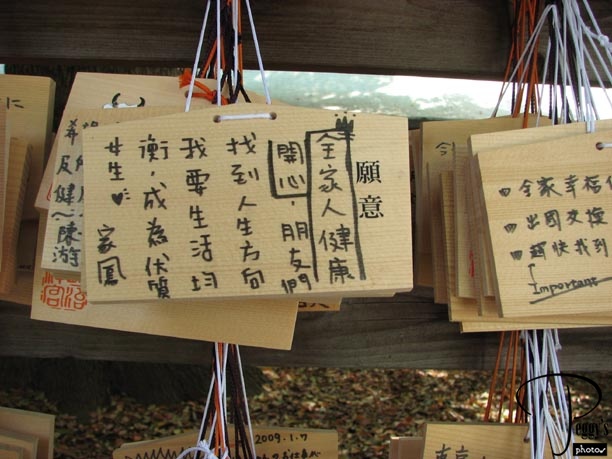
Close–up of a tablet.

Meiji Jingu Shinto Shrine
Meiji Jingu Shinto Shrine
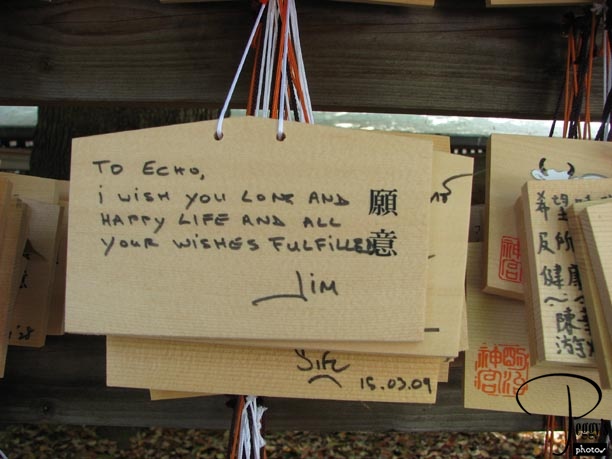
Another close–up.

Meiji Jingu Shinto Shrine
Meiji Jingu Shinto Shrine
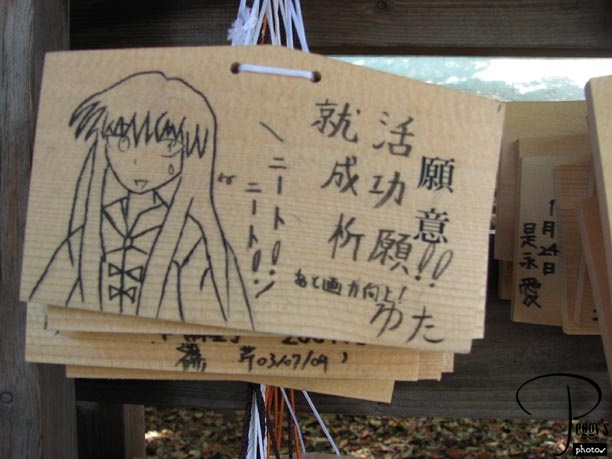
And another.

Meiji Jingu Shinto Shrine
Meiji Jingu Shinto Shrine
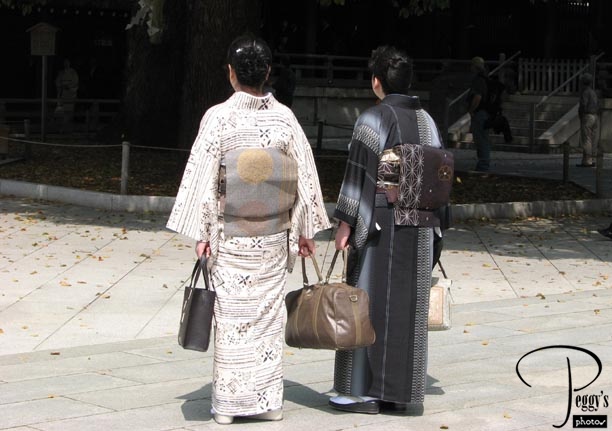
Women seen in kimonos.

Meiji Jingu Shinto Shrine
Meiji Jingu Shinto Shrine
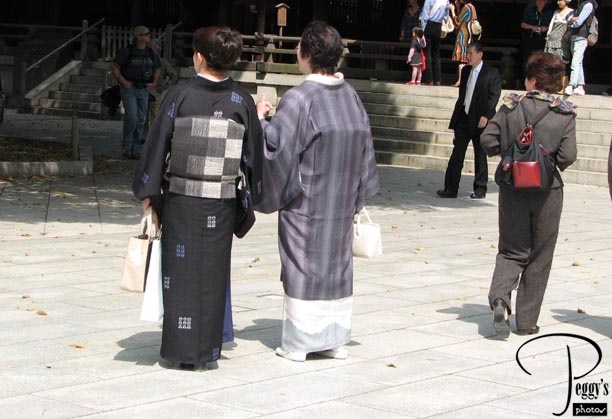
Two more women in kimonos.

Meiji Jingu Shinto Shrine
Meiji Jingu Shinto Shrine
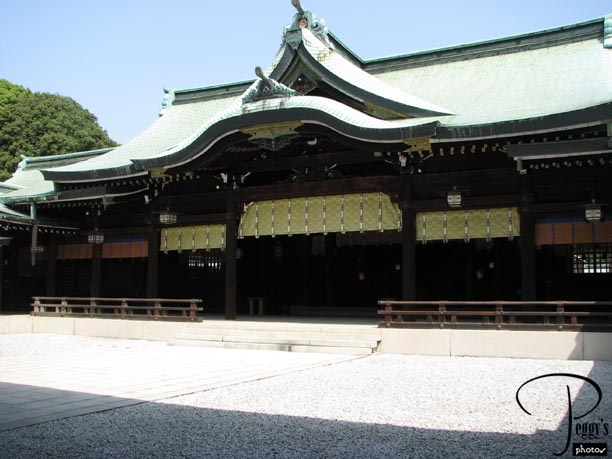
The Inner Shrine.

Meiji Jingu Shinto Shrine
Meiji Jingu Shinto Shrine
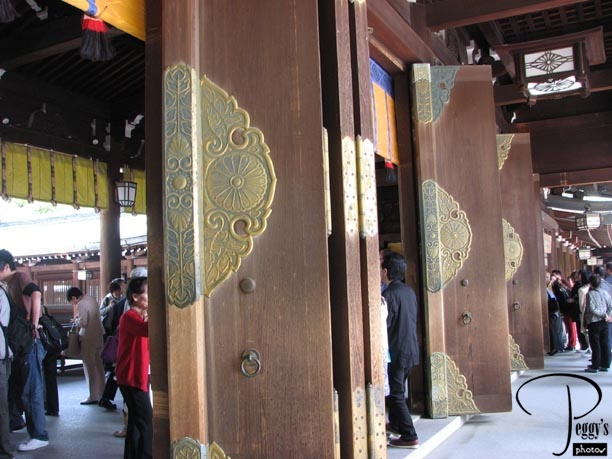
Doors of the Main Shrine.

Meiji Jingu Shinto Shrine
Meiji Jingu Shinto Shrine
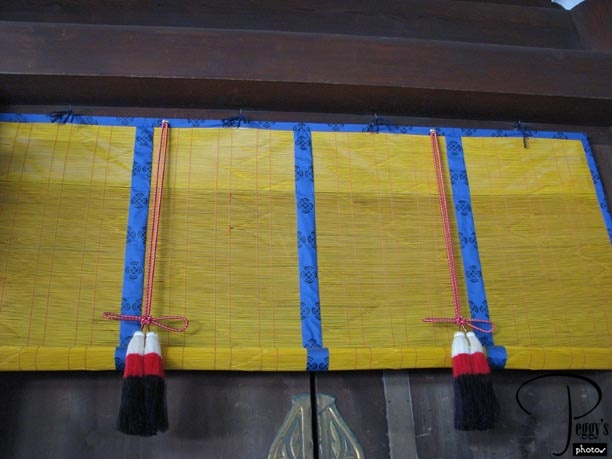
Awning of the Main Shrine.

Meiji Jingu Shinto Shrine
Meiji Jingu Shinto Shrine
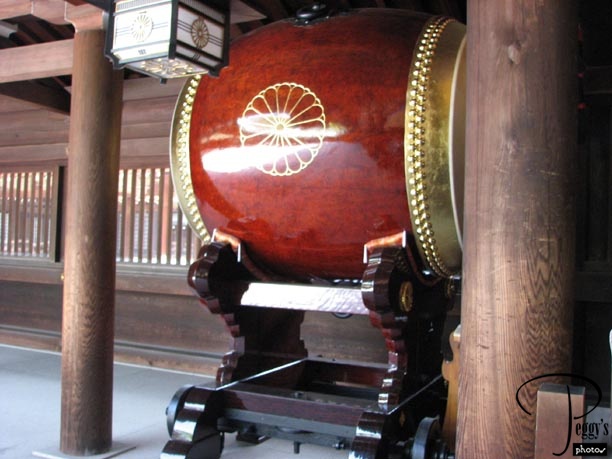
This is the only photo I took inside the Main Shrine. Either I forgot to take a photo or there really wasn’t anything to take a photo of. Ceremonies are held in the Main Shrine. When you pray at either a Shinto shrine or a Buddist shrine, you follow this order: bow twice (out of respect), two hand claps (to get the gods’ attention), say a prayer with hands clasped, and then one more bow.

Meiji Jingu Shinto Shrine
Meiji Jingu Shinto Shrine

On our way into the shrine, we caught a glimpse of a woman preparing for her Shinto wedding. A headress in being placed on her head, called a “tsunokakushi” or “horn cover.” The cover is worn during the wedding ceremony to cover the bride’s horns––such as those of jealousy and anger. The wearing of the tsunokakushi symbolizes her committment to a good marriage.

Meiji Jingu Shinto Shrine
Meiji Jingu Shinto Shrine
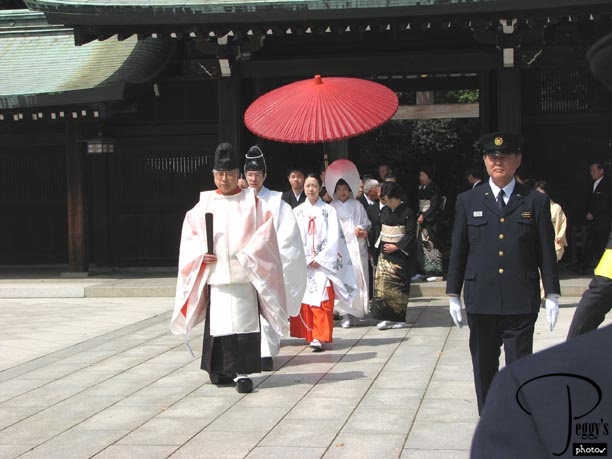
Later, we were allowed to view part of a Shinto wedding ceremony.

Meiji Jingu Shinto Shrine
Meiji Jingu Shinto Shrine
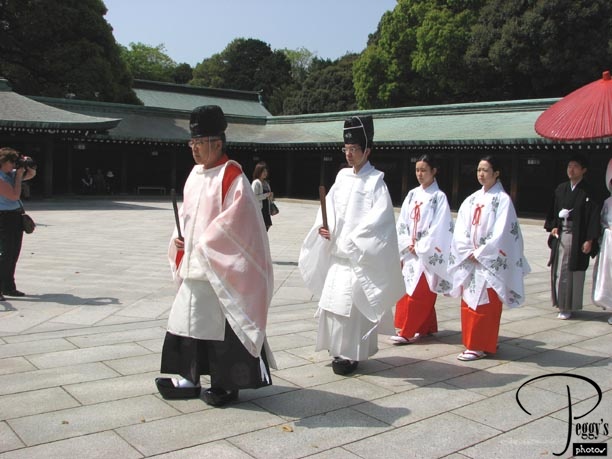
More of the ceremony.

Meiji Jingu Shinto Shrine
Meiji Jingu Shinto Shrine
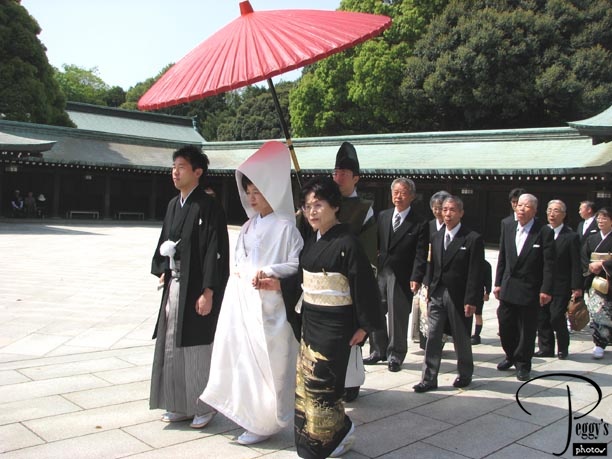
The bride and groom and the wedding party.

Meiji Jingu Shinto Shrine
Meiji Jingu Shinto Shrine
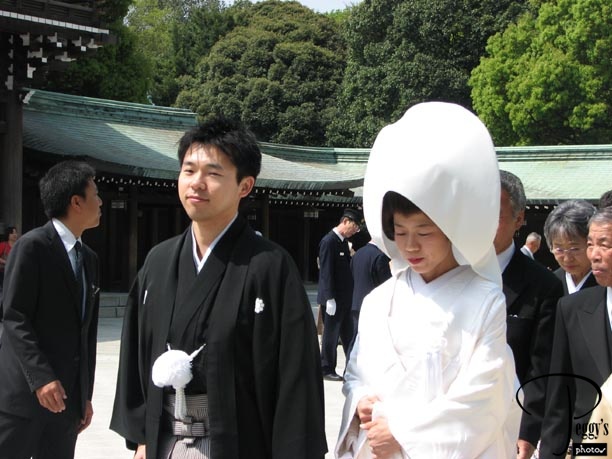
The bride and groom.

Meiji Jingu Shinto Shrine
Meiji Jingu Shinto Shrine
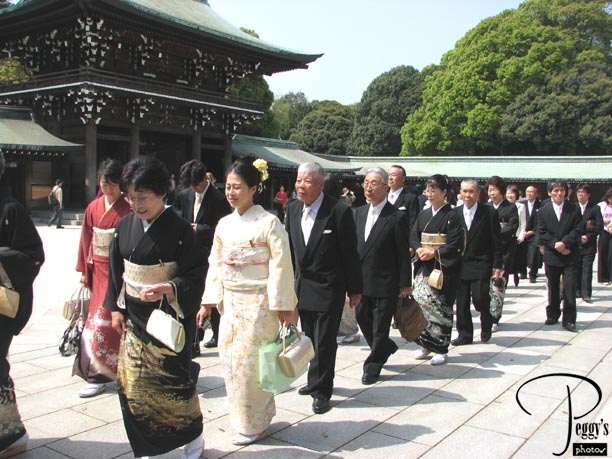
The wedding party.

Meiji Jingu Shinto Shrine
Meiji Jingu Shinto Shrine
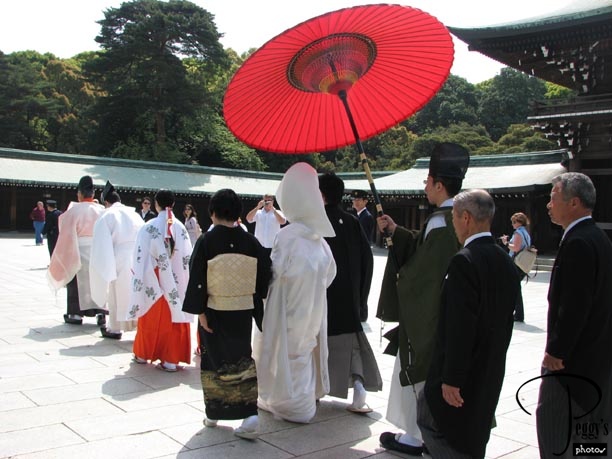
The wedding party.

Meiji Jingu Shinto Shrine
Meiji Jingu Shinto Shrine
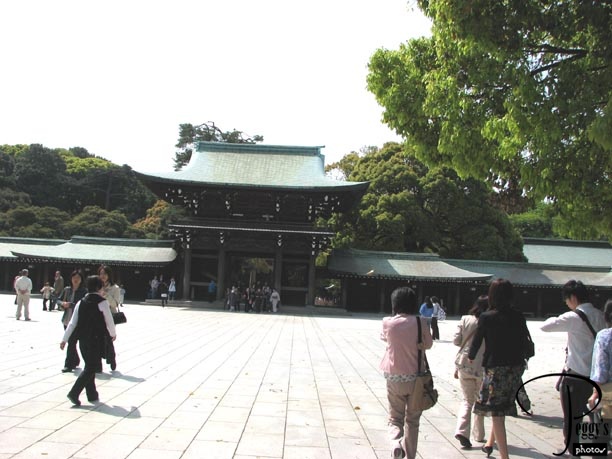
Heading back to the Outer Shrine.

Meiji Jingu Shinto Shrine
Meiji Jingu Shinto Shrine
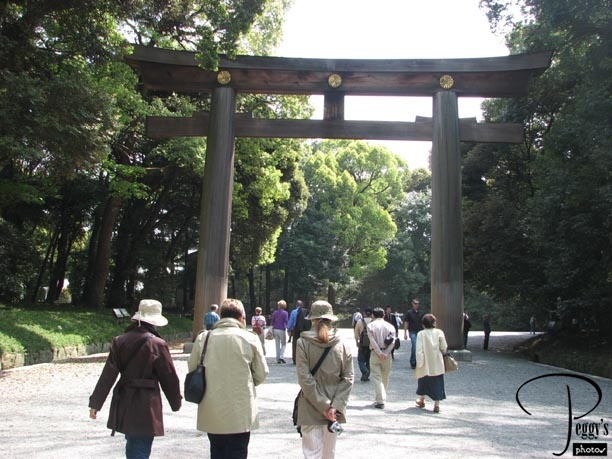
Going back through the torii.

Meiji Jingu Shinto Shrine
Center Gai
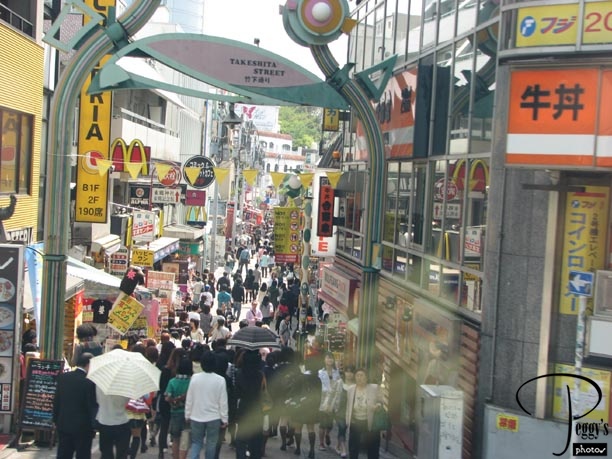
Across from the entrance to the Meiji Jingu Shinto Shrine is the Center Gai. It is lined with shops, restaurants, karaoke bars, etc., that appeal to teenagers and college students––they have their own street! On our bus ride, we also passed an extremely large area of designer shops, I guess appealing to the well–heeled older person.

Center Gai
Akasaka Palace
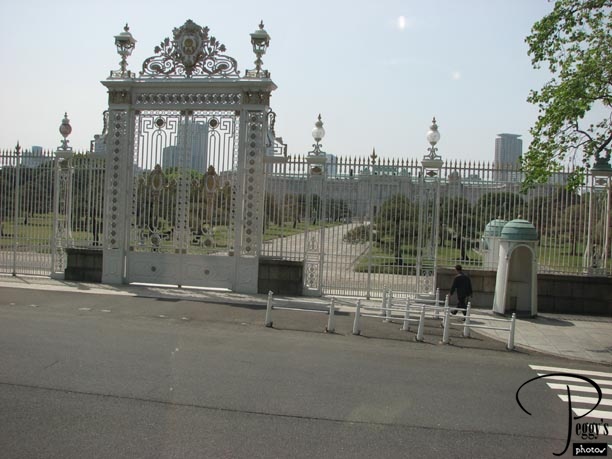
We drove by the Akasaka Palace on the Imperial Palace grounds, which serves as a guest house for foreign dignitaries. It is probably hard to see it in this photo, but the Akasaka Palace appeared to be as big as Buckingham Palace in London.

Akasaka Palace
The Emperor and the Empress
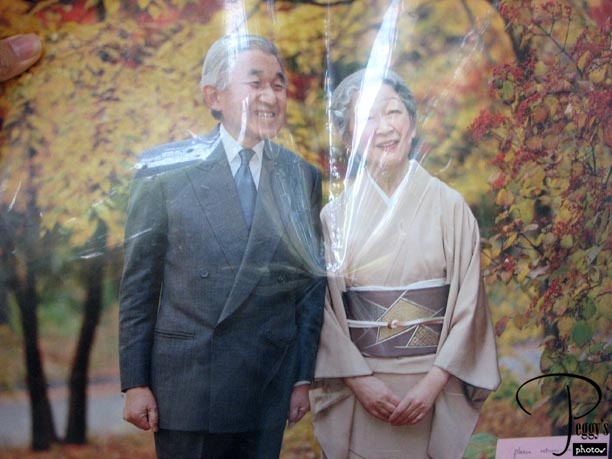
Our tour guide had along a photo of Emperor Akihito and Empress Michiko, the Emperor and Empress of Japan. Akihito became the 125th Emperor of Japan in 1989. The Emperor and Empress celebrated their 50th wedding anniversary this month.

The Emperor and the Empress
The Imperial Palace East Garden
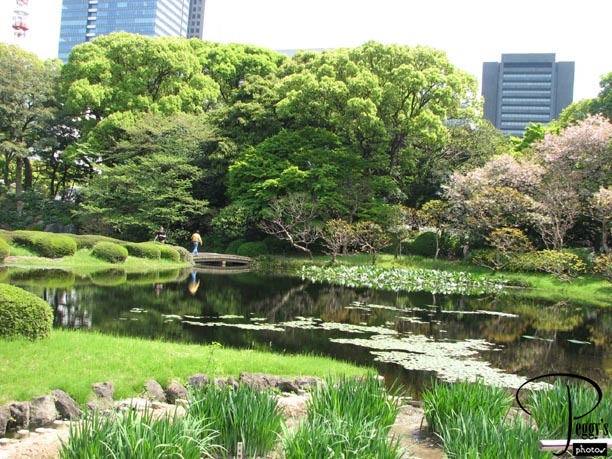
Our next stop was at the East Garden of the Imperial Palace. Visitors to the rest of the grounds of the Imperial Palace are only allowed twice a year––on New Year’s Day and on the Emperor’s birthday. Photo: The East Garden. I have put the rest of my photos of the garden on a slide show on this website: Go to Slide Shows, Asia, Japan, “Tokyo, Imperial Palace East Garden.”

The Imperial Palace East Garden
The Imperial Palace
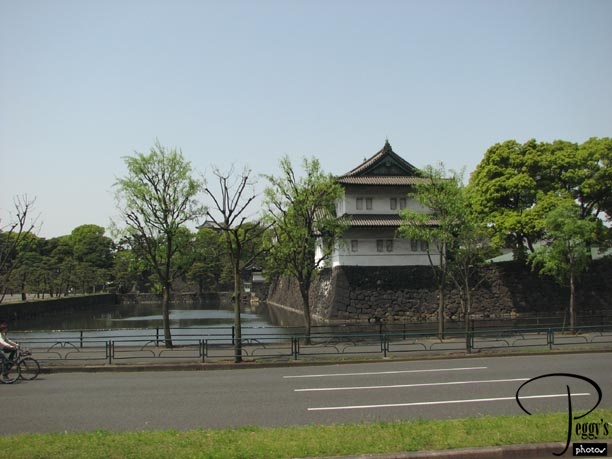
We drove past another section of the Imperial Palace.

The Imperial Palace
Near the Imperial Palace
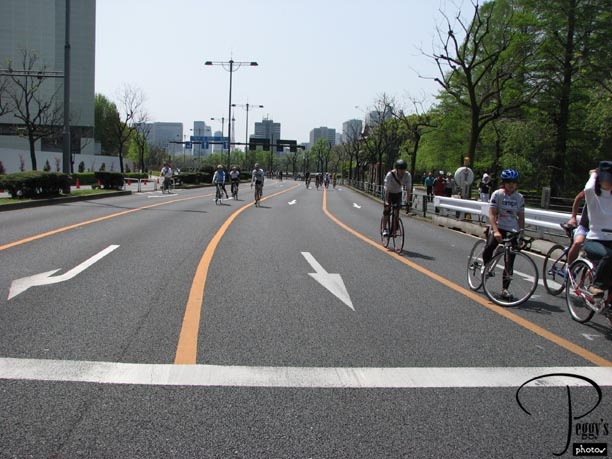
Today was a Sunday and traffic was blocked on the road around the palace for bicycle riding.

Near the Imperial Palace
Near the Imperial Palace
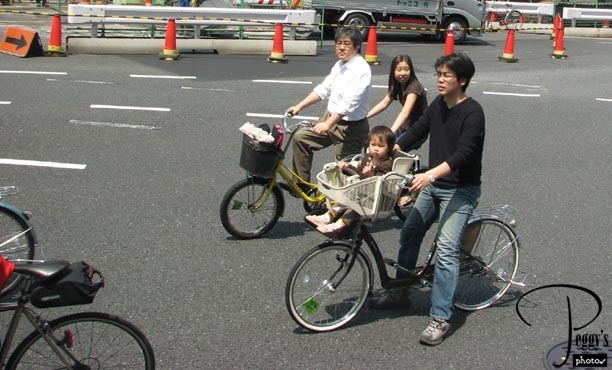
Bike riders.

Near the Imperial Palace
Two Flags
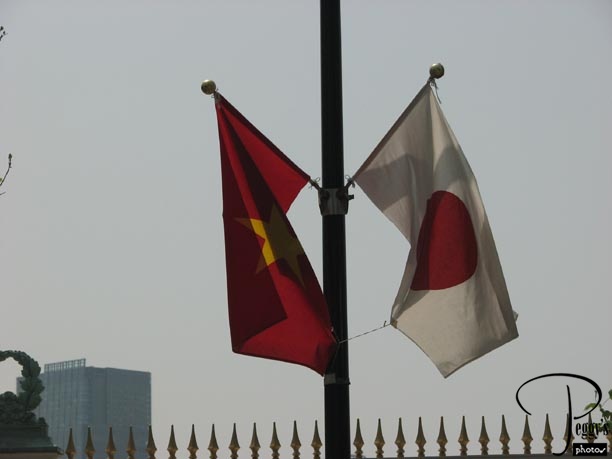
Back on the bus. The flag on the left is the Vietnamese flag and the one on the right is the Japanese flag. The Vietnamese flag was flying because the Vietnamese prime minister was visiting Tokyo.

Two Flags
A Kite Store
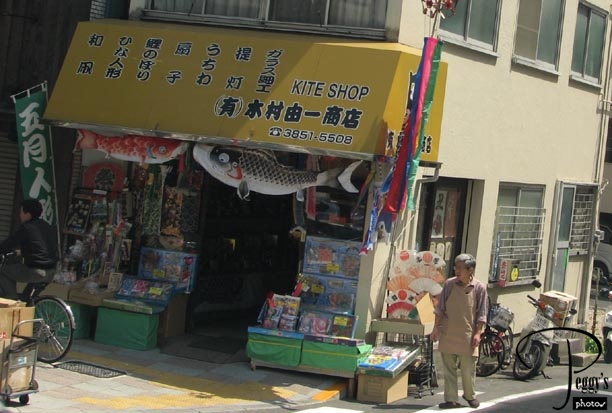
We passed a kite store on the way to our next destination: the Senso–ji Buddhist Temple, which will appear on the next album.
